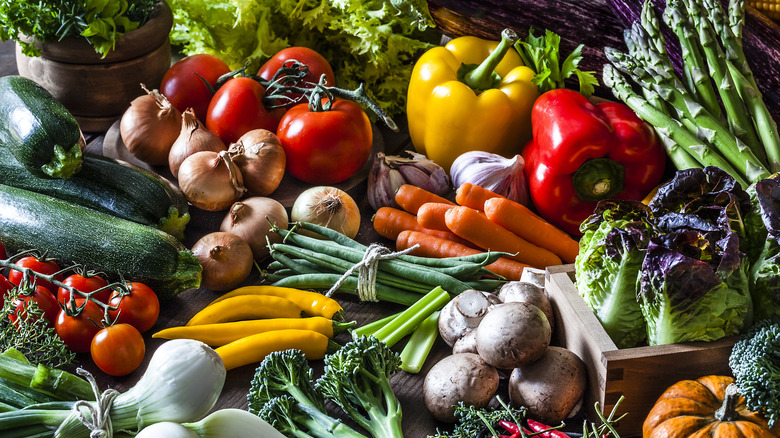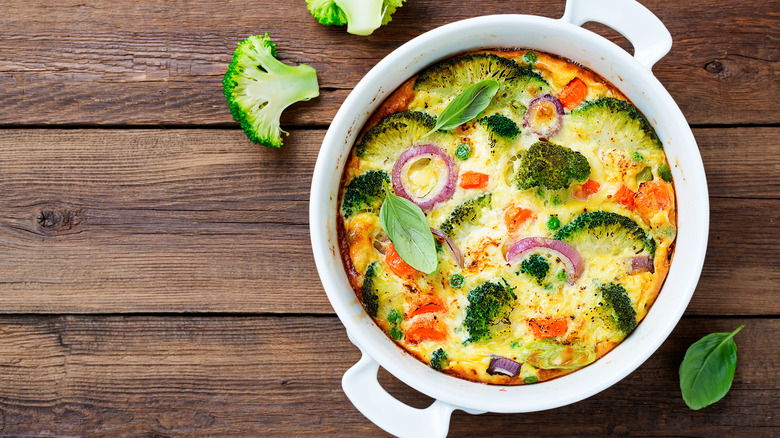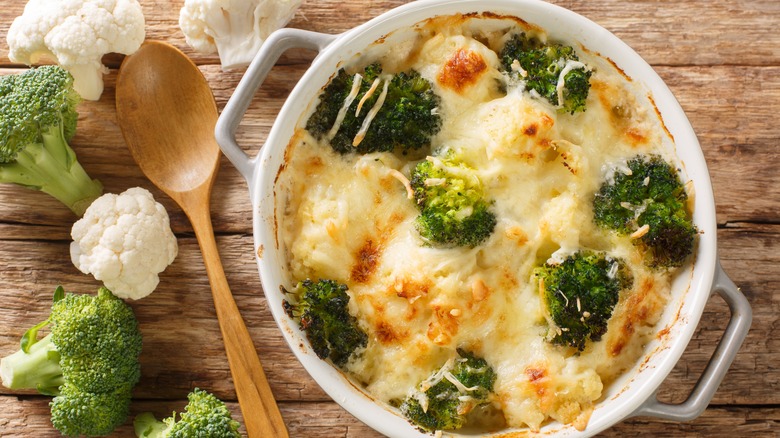Splurging On Fresh Vegetables For Casserole Is Always Justifiable
From tuna with noodles and green beans to king ranch chicken and breakfast egg bakes, casseroles are a go-to dish for anyone looking to feed a crowd, meal prep for the week, or use up leftover vegetables and proteins. It's also a perfect way to cut down on dishes and get meals to the table quickly on busy weeknights.
Debates may abound about what constitutes a casserole, but the general consensus is that it contains some combination of protein, vegetables, and starch (like potatoes, pasta, or rice) and often — though not always — has a dairy component to bind the ingredients together. One of the primary pluses of preparing a casserole is the ease of making it, so it would seem reasonable that frozen veggies would be one of the stars of the casserole show.
To the contrary, frozen veggies have the potential to wreck your one-dish dinner. According to the British Heart Foundation, frozen vegetables can be just as nutritious as their fresh counterparts, but the amount of moisture they add to a dish could drag it down. Instead, fresh vegetables are the best option for a casserole.
How water ruins casseroles
Frozen vegetables often release more moisture when cooking. As a result, your casserole's consistency may not turn out as expected or intended. Pasta and rice can become mushy, and what might have been a luxurious and creamy cheese sauce may turn out watered down. So how do you make sure that your casserole is saucy, not soggy?
If you don't want a soupy casserole, it's best to not introduce frozen vegetables. If you must, though, you can thaw the vegetables first and use paper towels or a clean kitchen towel to gently squeeze and remove excess moisture. Bear in mind, though, that this extra step somewhat negates the time efficiency you likely intended to achieve by opting for frozen vegetables to begin with.
Instead, invest in fresh veggies from the produce section or farmers' market. The time that it takes to peel, dice, or grate them will be worth the results.
Tips and tricks for using fresh veggies in casseroles
When using fresh vegetables in a casserole, it's still important to consider their water content. Vegetables like mushrooms, zucchini, and eggplant, among others, have a large amount of water in them that can be released when cooking in a casserole. To avoid having these veggies ruin your dish, try quickly cooking them ahead of time. For vegetables with a large surface area, you can also use salt to pull the moisture out — just shake on the salt and allow them to drain in a strainer before rinsing and patting dry with a paper towel.
Another way to make sure your fresh vegetables are a contributor to your casserole's success is to cut them uniformly. Ensuring that they're similar in size will help them to cook evenly.
Finally, when your casserole is finished cooking, resist the urge to dig right in. Giving the dish a few minutes to rest after baking will allow some of the moisture that has been released to be soaked back in. This results in a more firm, structured dish when you do slice it.



